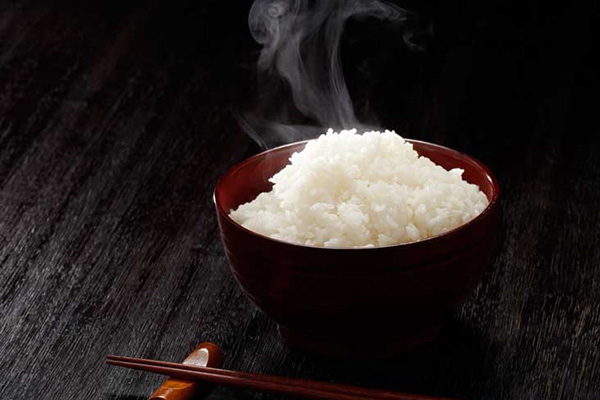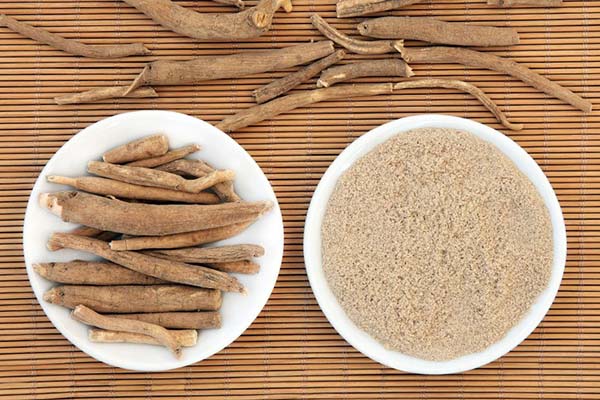Eating a lot of rice makes you shorter. It’s a statement that has been heard in various forms, and it often sparks lively debates among people who enjoy this staple food. But is there any truth to this belief? Does rice really stunt growth? The notion that rice can affect one’s height may have its roots in the observation that Asians tend to be shorter on average compared to their European and American counterparts. Many attribute this difference to the widespread consumption of rice in Asian diets. However, before we delve into this hypothesis, let’s begin by examining some crucial information related to rice and its impact on our health and growth.
What is your knowledge regarding rice?
Rice, often referred to as a staple food, has garnered widespread acclaim across numerous regions of the world, overshadowing traditional cereals such as potatoes and yams. Its primary consumption stronghold lies in Asia, Latin America, and select areas of Africa, owing to its remarkable adaptability, widespread availability, and remarkable ability to absorb a wide array of seasonings and flavors. Rice boasts a delightful combination of chewy and soft textures, rendering it a versatile ingredient that complements a diverse range of culinary traditions.
Is rice a nutritious choice?
Rice can be categorized into two main types: whole grains and refined grains.
Whole grains encompass three key components:
- The bran, renowned for its high fiber content and abundant reserves of trace minerals and B vitamins.
- The endosperm, serving as the central layer rich in proteins and carbohydrates.
- The sprout, a nutritionally dense core that houses healthy fats and antioxidants.
Wild and brown rice belong to the category of whole grains as they encompass both bran and sprout components, endowing them with a wealth of vitamins and minerals. In contrast, white rice solely consists of the endosperm, a choice made to enhance flavor, prolong shelf life, and optimize cooking properties.

What is the nutritional profile of rice?
When examining the nutritional content of rice, it’s essential to delve into the details. Rice, a staple food for millions worldwide, provides valuable insights into its composition. Let’s explore the nutritional makeup of one cup (158 grams) of cooked long-grain white rice, as revealed by research:
- Energy: A serving of rice delivers 205 kilocalories, providing a substantial energy source.
- Carbohydrates: Rice is rich in carbohydrates, with a notable 44.6 grams in a single cup serving.
- Protein: While not exceptionally high in protein, rice still contributes 4.25 grams per serving.
- Fiber: Although relatively low in fiber content at 0.632 grams, rice serves other dietary purposes.
- Calcium: It contains a modest 15.8 milligrams of calcium.
- Potassium: Rice offers 55.3 milligrams of potassium, a crucial electrolyte.
- Phosphorus: With 67.9 milligrams of phosphorus, rice contributes to overall mineral intake.
These nutritional components collectively categorize rice within the carbohydrate-rich food group. Carbohydrates are renowned for their role as a primary energy source for the human body. However, one might wonder if rice consumption has any impact on factors such as height. To gain insights into this intriguing question, read on!
Does eating a lot of rice cause stunted growth?
The concise response to this query is negative; however, there are several vital aspects that merit thoughtful consideration.
Rice and Its Carbohydrate Content
Rice, as previously noted, is a complex carbohydrate composed of a network of simple sugars. Upon ingestion, the body processes rice into simpler forms, which are subsequently utilized as an energy source. While rice is indeed an excellent energy source, it is by no means the sole option. Other starchy foods, such as wheat and potatoes, also provide the essential carbohydrates required by the body.
It is worth noting that rice falls into the category of high-glycemic foods, which means it can cause a rapid increase in blood sugar levels, leading to cravings and overeating. In contrast, low-glycemic foods, like beans and lentils, help regulate blood sugar levels more gradually, promoting a sensation of fullness and curbing cravings.
Therefore, excessive rice consumption can inundate the body with an excess of carbohydrates, potentially resulting in weight gain, and potentially even contributing to the development of obesity or type II diabetes.
The Presence of Arsenic in Rice
In comparison to other grains, rice has the propensity to accumulate ten times more inorganic arsenic. This is primarily attributed to the cultivation of rice in water-flooded paddies, which can lead to the absorption of arsenic from contaminated soils. In its inorganic form, arsenic is highly toxic and may elevate the risk of cancer.
While rice is generally regarded as a nutritious food, there is a potential hazard associated with consuming it excessively. An overabundance of rice in one’s diet, without the inclusion of other nutritionally diverse foods, may result in an excessive intake of carbohydrates while depriving the body of other essential nutrients such as protein, vitamins, and minerals.
Hence, it is imperative to maintain a well-balanced diet that encompasses a variety of foods. By doing so, one can mitigate the risk of encountering impediments to achieving their full growth potential.
What should you eat with rice to support height growth?

With beans and peas
Beans and peas, renowned for their robust fiber content, potent antioxidants, and an array of essential nutrients, have been demonstrated to positively impact cholesterol levels, blood sugar regulation, and blood pressure. Of paramount significance is their ability to synergize with rice, forming a complete protein source that provides all nine vital amino acids in optimal proportions. This dietary synergy holds particular importance for individuals adhering to a vegetarian diet, given that most complete proteins are predominantly sourced from animal products. Consider incorporating rice into your culinary repertoire by pairing it with delectable options such as stewed lentil peas, robust black beans chili, or aromatic dhal, crafted from dried split peas or lentils.
With fish
Partaking in a diet rich in fish, a practice encouraged at least twice weekly, promises a multitude of health benefits, spanning from bolstering bone density to promoting healthy growth. Fish serves as a bountiful source of essential nutrients, including calcium, vitamin D, high-quality protein, potent antioxidants, omega-3 fatty acids, and inflammation-fighting compounds. Elevate your dining experience by exploring culinary creations like curry-infused salmon or a tantalizing tuna rice casserole, thoughtfully complemented by an array of fresh or cooked vegetables to amplify the nutritional spectrum.
Vegetable rice
Harness the nutritional prowess of non-starchy vegetables to offset the relatively lower fiber content of white rice. These vibrant veggies also bestow a treasure trove of essential nutrients, such as vitamin C, calcium, folate, and iron, which contribute to stable blood sugar levels and offer protective benefits against select cancer types. Invite variety to your table by crafting vegetable-infused rice dishes featuring ingredients like spinach, carrots, or pumpkin, infusing each bite with a symphony of flavors and healthful nourishment.
Rice bowls
Rice bowls represent a harmonious culinary ensemble where the canvas of cooked rice becomes the foundation for an artful composition. Elevate your dining experience by adorning this canvas with a medley of elements, such as beans, peas, vegetables, creamy avocados, or briny olives to infuse your meal with healthy fats and a delightful textural contrast. To amplify flavor, introduce an array of gravies or sauces, and don’t forget to top it all off with a protein source of your choice, be it succulent grilled chicken, a perfectly medium-boiled egg, or tofu for those seeking a vegetarian twist. To further tantalize your taste buds, explore the world of herbs, spices, or vinaigrettes to drizzle over your creation, transforming each bite into a culinary masterpiece.
Incorporate these diverse and nutritious culinary combinations into your dietary repertoire to savor a symphony of flavors while nurturing your body with a wealth of healthful benefits.
Is there anything else?
In addition to maintaining a well-balanced diet between rice and other nutritious foods, you also should:
Get enough sleep
If you consistently fail the suggested hours of rest during adolescence, it can stunt growth. That is because when you sleep, your body secretes HGH, which is needed for cell regeneration, tissue repair, and overall development.
So, what are the recommended hours of sleep for each age group?
- Newborns: 14 – 16 hours per day
- 1 – 3 years old: 12 – 14 hours per day
- 3 – 6 years old: 10 – 12 hours per day
- 7 – 12 years old: 10 – 11 hours per day
- 12 – 18 years old: 8 – 9 hours per day
As parents, you need to support your children in performing good sleep habits to improve their sleep health.
- Go to sleep at the same time every night and wake up at the same time every morning, including on weekends.
- Make sure the bedroom is dark, quiet, relaxing, and at a cozy temperature.
- Remove electronic and smart devices from the bedroom.
- Do not consume large meals or drink caffeine or alcohol before going to bed.
- For further information, click here.
Do exercise
Exercise brings a direct impact on physical attributes for sure. It helps build bones and muscles, triggers HGH production, and supports weight maintenance. You need to concentrate on strength-enhancing and bone-stretching workouts, like yoga, jumping rope, hanging, push-ups or sit-ups, to have more control over your physique.
If you want to know more natural ways to increase height, you should visit here.
In conclusion
The rice you enjoyed as part of last night’s dinner won’t directly hinder the growth of you or your children. However, there is emerging evidence indicating that excessive consumption of rice, particularly without the inclusion of other essential nutrients, could potentially play a role in stunting growth. Therefore, it is advisable to consistently maintain a balanced diet and complement it with various beneficial practices to ensure that your children achieve optimal growth and development.



